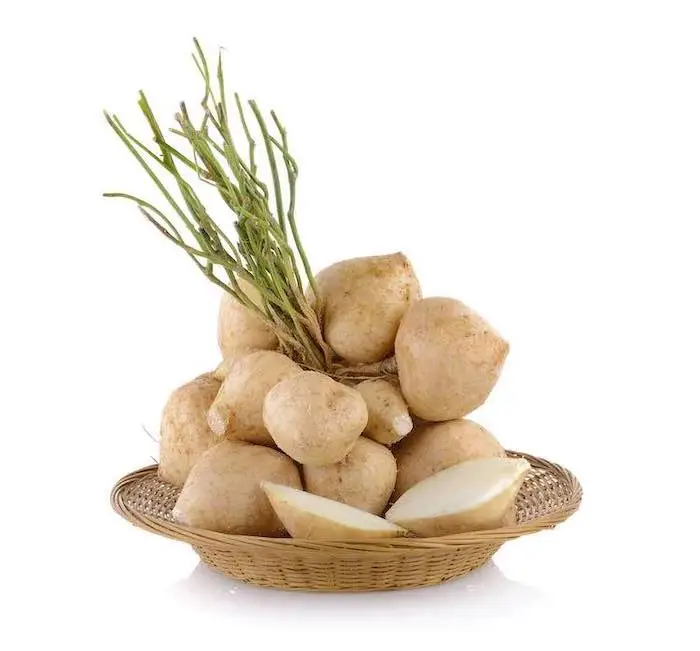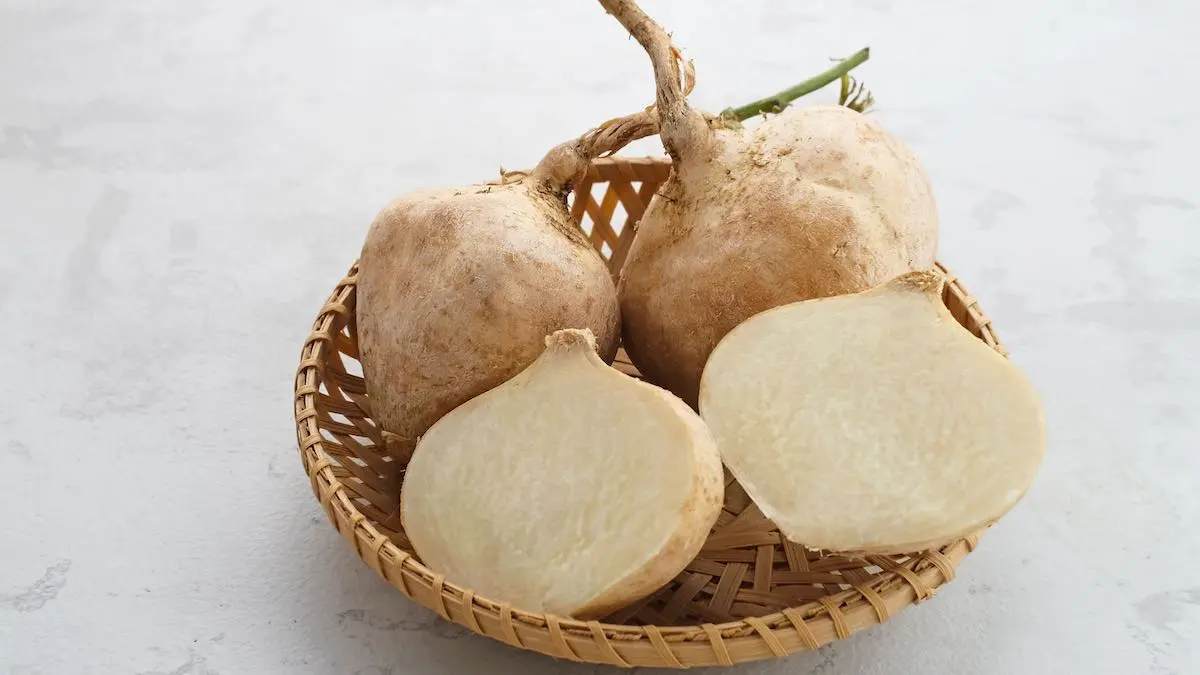Table of contents
Growing Jicama in Australia
Jicama (Pachyrhizus erosus), or yam beans grow easily in the tropics, so we have produced this ‘jicama growing guide’. However, do not eat the beans of this plant as they are poisonous.
This plant originated in Mexico and Central America. Later, the Spanish are known to have introduced it to Asia. Jicama is also known as yam bean, Mexican potato, Chinese potato and sweet turnip.
Jicama can be grown from either a tuber or by seed.

Jicama Growing Time
We harvest our jicama after 6 months. You can harvest after 4 months, but the tubers will be smaller.
The great news is that in the tropics you can grow jicama all year around. We always have some jicama in the ground.
In cooler areas you want to stay away from the coldest part of year, so it is best to plant at the end of winter, which should still give you nine full months of growing.
Jicama Seeds
Jicama can be grown from tubers or seeds (see above). As seeds have a hard coating, it helps germination if they are soaked in warm water overnight before planting.

Growing Jicama from Seed
Time needed: 5 minutes
How to grow jicama from seed.
- Prepare seeds.
Soak your seeds overnight before planting.
- Planting
Plant your seeds 50mm (2in) deep and 20cm (8in) apart in well draining soil.
- Trellis
It is a good idea to plant next to a trellis or other structure for the plant to grow up.
- Sun and Water
Make sure your plant receives at least 9 hours of sunlight per day and water regularly.
- Harvest
Wait at least 6 months before harvesting.
How to Get Jicama Seeds
The seed pods and seeds contain rotenone, a toxic substance which is used as an organic insecticide. It is usually recommended to remove pods as they appear, usually in Autumn, so all plant energy is put into the tuber, however it may be necessary to leave a couple of pods to mature for the purpose of saving seeds.
To get seeds, leave pods on the vine, in late winter they will turn brown. Pick the brown pods before they dry out as when the pods dry out, they split and throw the seeds in the ground to make next years crop. Please be careful children are not tempted to eat these pods.
Growing Jicama in Pots
Growing Conditions
Full sun or even semi shade are fine for growing jicama. However, you will need a trellis for them to grow up.
This plant requires well draining fertile soil containing lots of organic matter. Indeed a rich, moist, sandy loam soil that is high in potassium will give the very best results.
Fertilising
You should fertilise jicama once a month with a high phosphorus organic fertiliser to assist the growth of large, tuberous roots. Avoid using too much nitrogen on your plants, as that will encourage the production of stems and leaves rather than roots.
Pruning
Many home gardeners prune jicama. After all, pruning the vine can help prevent the plant from taking over your garden. In addition, removing flowers to help the plant send more energy to the roots instead of the growing flowers.
Jicama Growing Pests and Diseases
Fortunately Jicama is very pest resistant. However, it can be susceptible to weevils and plant diseases. Your plants may also experience root rot if overwatered.
Jicama Growing: Fruit Benefits
Raw jicama’s white flesh is slightly sweet and crunchy. While some people like to use it when they’re stir frying vegetables, jicama is typically eaten raw in slaws and fruit salad.
Jicama is known to helps relieve inflammation, gout, hangovers and cleanses the kidney and liver.
Vitamins and Minerals
Jicama contains vitamin A, E and C. They also contain other minerals like manganese, zinc, phosphorus, iron and calcium.
Weight Lose
Jicama is high in protein and low in fat, making it a good food to eat if you are trying to lose weight.
Other Tropical Vegetables
- Capsicum
- Cucumber
- Eggplant
- Jicama Growing
- Kangkong
- Malabar Spinach
- Pak Choi
- Perpetual Spinach
- Pumpkin Growing
- Snake Beans Growing
- Sweet Potato
- Tatsoi

